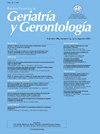[健康老龄化的挑战:阿根廷老年人的需求与已实施政策之间的差距]。
Q3 Medicine
引用次数: 0
摘要
背景和目标:虽然健康老龄化的概念趋于单一化,但在不同地区,甚至在同一国家内,也存在着不同的特点。目前已有一些旨在促进健康老龄化的政策,但必须了解人口的需求,才能使这些政策行之有效。本项目旨在找出 60 岁以上老年人实现健康老龄化的需求与阿根廷为支持这一目标而实施的政策之间的差距:采用定性与定量相结合的方法,分三个阶段进行描述性研究:1.对阿根廷现行计划进行文献回顾。2.对 60 岁以上老年人的需求进行可视化分析。3.确定所述需求与计划建议之间的差距:结果:确定了 28 项计划,其内容包括娱乐、同龄人关系、社会包容、保健和宣传。在评估健康老龄化的需求时,最常见的回答是保持良好的身体健康、保持思维活跃和继续参与活动。在差距分析中,我们注意到参与者对持续活动、家庭支持和积极态度等需求的重视程度高于受调查计划:结论:60 岁及以上成年人提出的需求与接受评估的计划之间存在差距。这项研究为确定优先事项做出了初步贡献,有助于使政府政策与这一人口群体的具体需求相一致。本文章由计算机程序翻译,如有差异,请以英文原文为准。
El desafío del envejecimiento saludable: brechas entre las necesidades de las personas mayores y las políticas implementadas en Argentina
Background and objectives
While the concept of healthy aging tends to be homogenized, differential characteristics are observed among regions and even within the same country. There are policies aimed at promoting healthy aging; however, it is essential to understand the needs of the population so that these policies can be effective. The objective of this project was to identify gaps between the needs of individuals over 60 years old to achieve healthy aging and the policies implemented in Argentina to support this purpose.
Materials and methods
Descriptive study with a mixed qualitative–quantitative approach was employed in three stages: 1. Documentary review of current programs in Argentina. 2. Visualization of the needs of individuals over 60 years old. 3. Identification of gaps between the stated needs and the proposals of the programs.
Results
Twenty-eight programs were identified with components such as entertainment, peer relationships, social inclusion, and health care and promotion. When evaluating needs for healthy aging, the most frequent responses were maintaining good physical health, keeping the mind active, and continuing to engage in activities. In the gap analysis, it was observed that needs such as continuing activities, family support, and positive attitudes were prioritized more by participants than by the surveyed programs.
Conclusions
There were gaps between the needs identified by adults aged 60 and over and the evaluated programs. This study represents an initial contribution to identify priorities and contribute to aligning government policies with the specific needs of this population group.
求助全文
通过发布文献求助,成功后即可免费获取论文全文。
去求助
来源期刊

Revista Espanola de Geriatria y Gerontologia
Medicine-Medicine (miscellaneous)
CiteScore
1.90
自引率
0.00%
发文量
62
审稿时长
85 days
期刊介绍:
Una revista de gran prestigio por sus artículos originales de investigación y revisiones. Permite cubrir todas las áreas de la medicina pero siempre desde la atención al paciente anciano, y está presente en los más reconocidos índices internacionales.
 求助内容:
求助内容: 应助结果提醒方式:
应助结果提醒方式:


